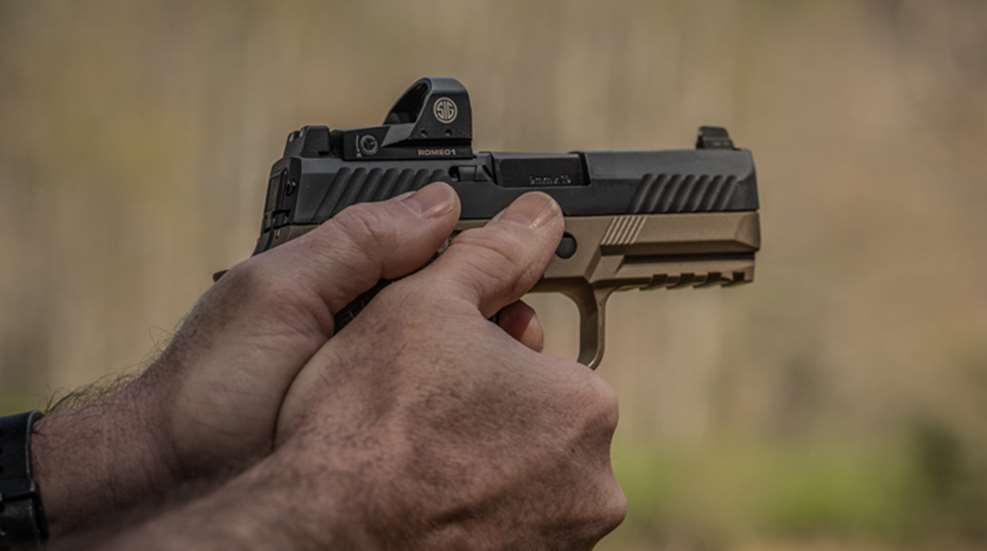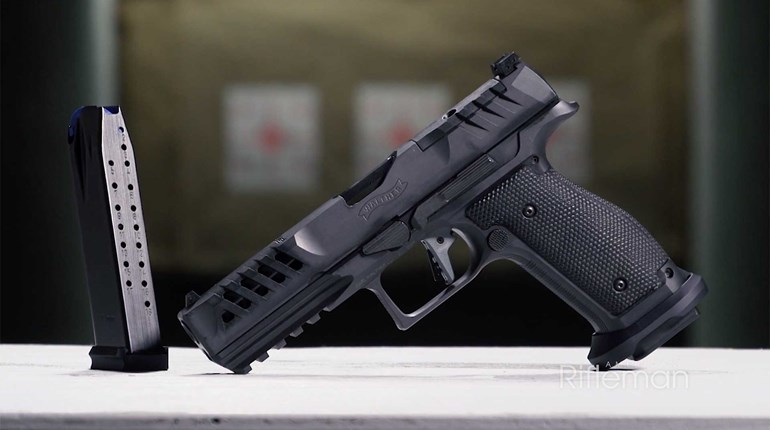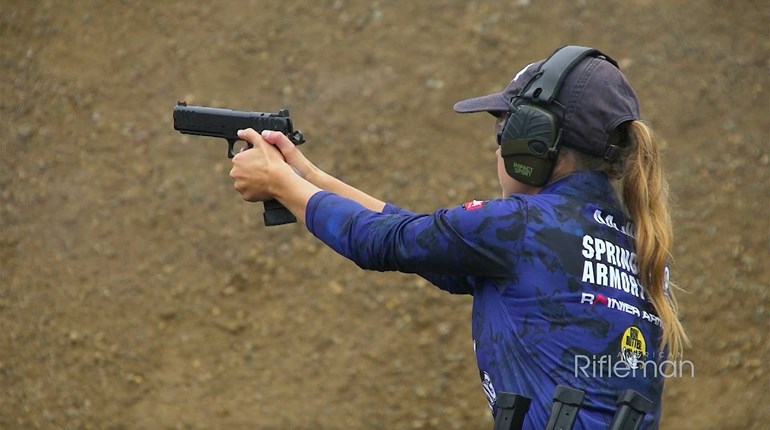
Much like the worlds of professional car, motorcycle or boat racing, in the world of professional shooters, the word ‘high performance’ is synonymous with shooting exceptionally well. Top shooters in the field may be called upon at any time to perform on demand at which time they must exhibit exceptional shooting skills.
Those shooters who train to develop their skills toward the next level, seek to maintain the highest degree of accuracy in the least amount of time. High performance translates to fine tuning that precarious balance of speed and accuracy. The secret to attaining this coveted skill can be found in following a three-fold path leading to the next level of your on-demand performance. They are: think, feel and do. Simple as they may sound, if it was so easy then why can’t everyone shoot at the grandmaster level?
Think of these three as stages in climbing a mountain. At the very base of the mountain is thinking about everything you do in the shooting process. Midway through the climb you no longer need to think because you have developed a sense of feeling about it and feel your way through as opposed to think your way through. At the very apex of your upward journey, you are met with the rarified air of simply doing without feeling or thinking.
Think
The thousand-mile journey begins with the first step. Before you even start "hiking," the very first step is to know exactly what the shooting process is. What are the exact steps you need to be aware of and how do you appropriately execute them? For example, drawing your handgun from the holster and aligning your muzzle with the visual center of the target. Pedantic as it may sound, if you don’t have this skill down cold then you really can’t get much further up the hill.
Using the draw stroke as an example, you want to establish your master grip with the dominant hand, bring both hands together in such a manner as to produce precise alignment of your muzzle with the target before reaching the top of your draw stroke. A very simple process to understand, but now do it ten times in a row without error each time decreasing the amount of time. Mastery would be flawless performance 85 percent of the time.
To reach this lofty goal, you would first need to think about precisely hitting your touchpoints along the way. The mind at this entry level needs something to chew on so you feed it your waypoints: master grip, alignment, press.
Thinking your way through the process provides the mental processing needed to guide the mechanical process of your body efficiently executing each of the physical movements.
Feel
Halfway up the climb after an unknown number of repetitions, you will find yourself thinking about each of the way points less and less. Using our draw stroke example, you may mentally focus on the initial master grip and then the press at the top of the draw stroke.
However, having allowed your body to successfully find alignment for you so many times, you hardly need to think about it anymore. In fact, your need to secure that important foothold no longer requires thought. Somehow it has morphed into a feeling “Hey that feels right!” or “That felt wrong.’
Sooner or later, with many more correct repetitions (upward steps) the remaining way points you fed your mind have morphed into a feeling. The mind no longer hungers for what to do. The body now feels what is “right” and what is “wrong.” As such you now can rely on the sure-footedness of feeling your way through the process.
Do
Last, but certainly not least is the approach to the summit of the performance mountain – being able to perform that skill without the need to think about it or even feel your way through it.
Following an untold number of steps through the feeling phase of your skills development, at times you may observe that “it felt like I wasn’t doing anything.” Alas, you have reached the pinnacle of performance – doing without the need to feel or think your way through it.
One or two of the pieces will eventually fall into place and gradually, like dominoes the remaining waypoints will follow suit. Once you no longer require feeling or thought you are simply performing the task at the highest level of efficiency possible – subconsciously.
The cost for each strata – thinking, feeling and doing – is time. The slowest of the three is thinking your way through it. Thought is the slowest of the three as it requires conscious effort. Feeling, although less costly than thought, still requires physical verification which in turn costs time. The least amount of time is doing – where this movement without thought or physical verification needed.
Your journey atop the mount is now complete. The threefold path has transformed you from consciously capable to subconsciously competent. You are now well on your way to consistent and repeatable on-demand performance.




































